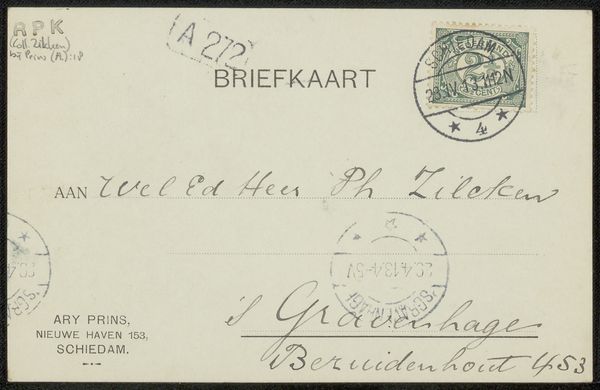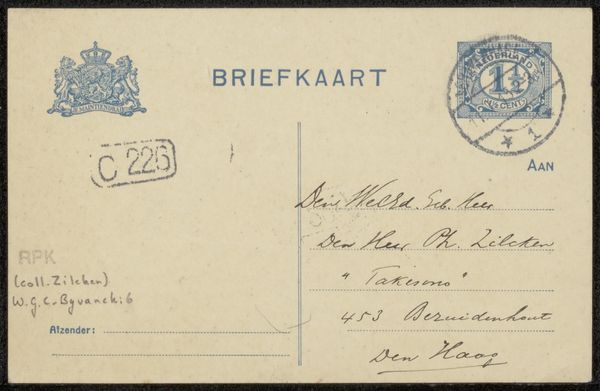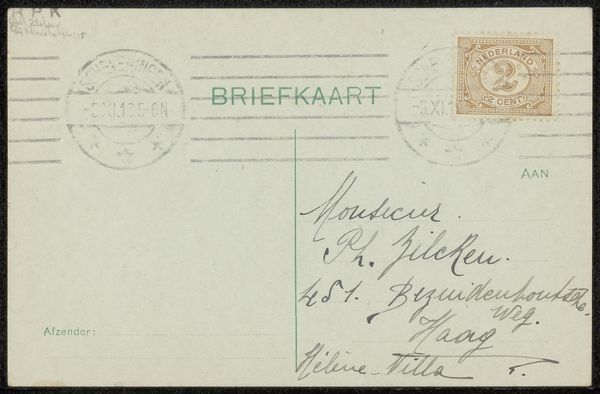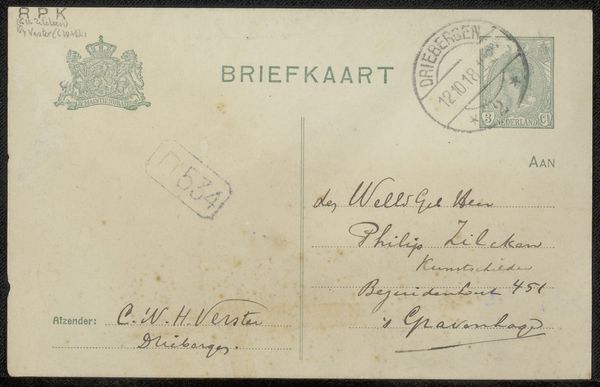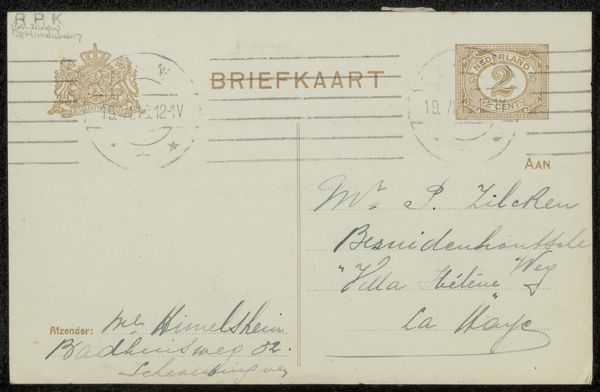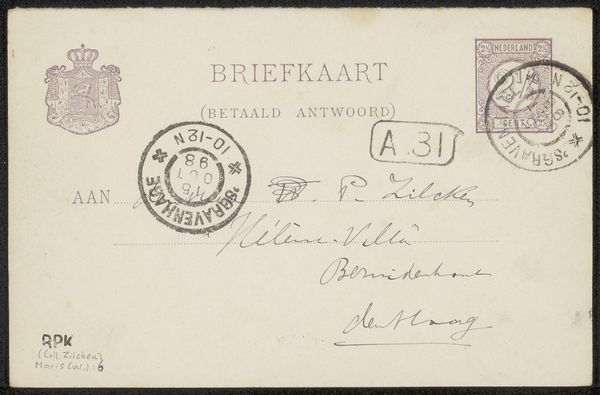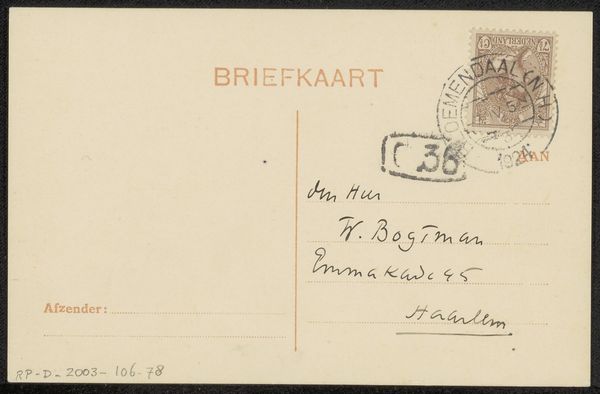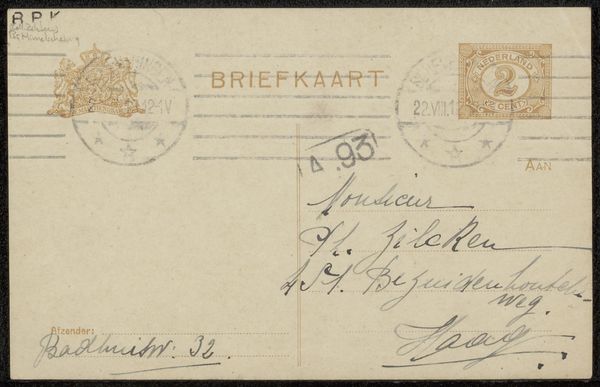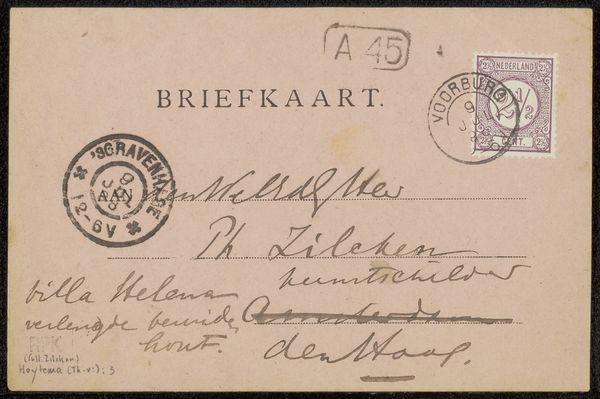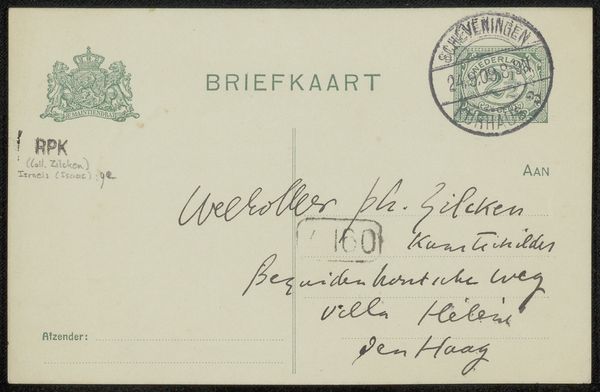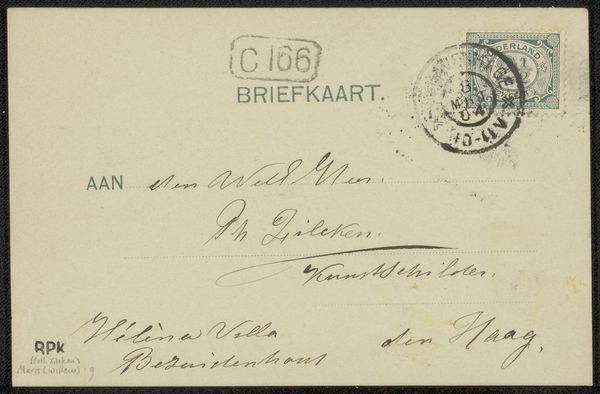
print, paper, ink
# print
#
paper
#
ink
#
calligraphy
Copyright: Rijks Museum: Open Domain
Curator: This intriguing piece is a postcard addressed to Philip Zilcken, the noted artist, and presumably penned by Arij Prins. Though the precise date eludes us, the postal markings suggest it likely originates sometime between 1913 and 1926. It is an ink print on paper. What are your initial thoughts? Editor: Well, beyond the formal address "AAN den Wel Ed Heer", there’s an understated warmth to the handwriting, the careful calligraphy seems quite formal, while conveying what I can only interpret as… a personal connection. Almost intimate. Curator: That’s perceptive. While seemingly a mundane item, its existence illuminates several aspects of the artistic and social climate. How did artists network? What were their relationships? How might institutional networks have shaped the modern art market? Editor: Precisely. The "who you know" game remains as prevalent today as it did then, a gate-keeping power. Here the recipient is identified as “Kunstschilder”, i.e. “painter.” This also feels… validating in its context. We, as an institution, take him seriously, acknowledge his profession. Curator: Indeed. And postcards like these were important modes of communication, essentially miniature, mobile pieces of art with visual culture shaping opinion on social events and expectations of cultural taste. In our era of mass production, these things can give insights to their political roles and implications, as well as social. Editor: And of course, one wonders about the content of the unrecorded message. Could its exchange perhaps shed more light on collaborations and reciprocal influences in early modern art movements? This "Briefkaart" feels very significant in an archival context. It hints at artistic movements, patronage networks, and even unspoken class and political dynamics that define our own institutions today. Curator: Absolutely. By situating this piece within broader narratives—intersectional narratives even—we can understand how identity and social forces intersect to mold perceptions about artwork creation, display, consumption and distribution—and ultimately how taste itself is constructed, sustained, reproduced, and altered. Editor: Well, thinking of it this way truly challenges traditional assumptions about value! I'll leave this with renewed perspectives about power in art spaces. Curator: I agree; it invites introspection about what museums prioritize, what perspectives are absent and which deserve to be highlighted!
Comments
No comments
Be the first to comment and join the conversation on the ultimate creative platform.
